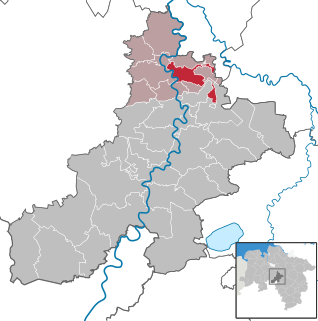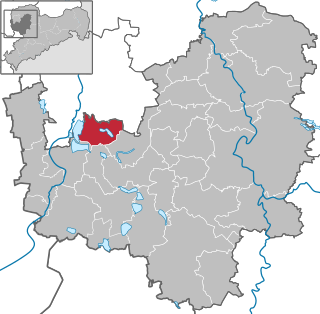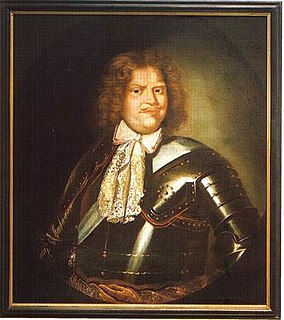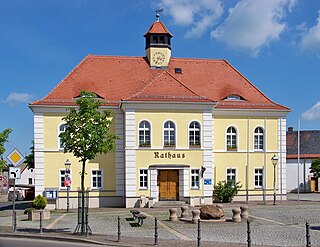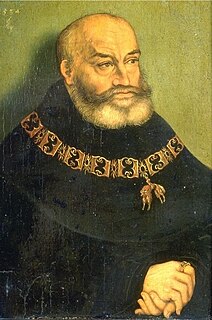
George the Bearded, Duke of Saxony, was Duke of Saxony from 1500 to 1539 known for his opposition to the Reformation. While the Ernestine line embraced Lutheranism, the Albertines were reluctant to do so. Despite George's efforts to avoid a succession by a Lutheran upon his death in 1539, he could not prevent it from happening. Under the Act of Settlement of 1499, Lutheran Henry IV became the new duke. Upon his accession, Henry introduced Lutheranism as a state religion in the Albertine lands of Saxony.
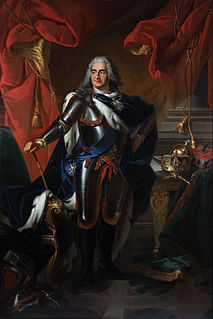
Augustus II the Strong of the Albertine line of the House of Wettin was Elector of Saxony, Imperial Vicar and elected King of Poland and Grand Duke of Lithuania.

John George I was Elector of Saxony from 1611 to 1656.
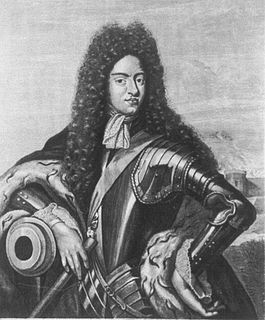
John George IV was Elector of Saxony from 1691 to 1694.

The Duchy of Saxe-Lauenburg, was a reichsfrei duchy that existed 1296–1803 and 1814–1876 in the extreme southeast region of what is now Schleswig-Holstein. Its territorial center was in the modern district of Herzogtum Lauenburg and originally its eponymous capital was Lauenburg upon Elbe, though in 1619 the capital moved to Ratzeburg.
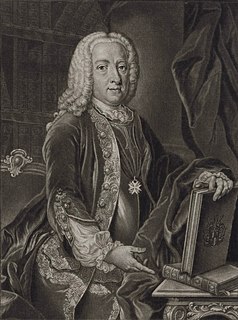
Count Heinrich von Bünau was a statesman and historian from the Electorate of Saxony, now part of Germany.

Augustus was Elector of Saxony from 1553 to 1586.

Frederick Michael, Count Palatine of Zweibrücken-Birkenfeld was a member of the Wittelsbach dynasty. He was the son of Christian III of Palatinate-Zweibrücken and Caroline of Nassau-Saarbrücken and a member of the House of Palatinate-Zweibrücken-Birkenfeld, a branch of the House of Wittelsbach. He was the father of the Bavarian King Maximilian I Joseph.

The German ancient noble family of Pfuel arrived in Brandenburg in the year 926 and later widened their influence to Saxony, Saxony-Anhalt, Mecklenburg, Pomerania, Württemberg, Westphalia, Eastern Europe and Sweden.
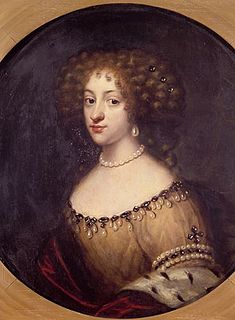
Princess Anna Sophie of Denmark was the eldest daughter of King Frederick III of Denmark and Sophie Amalie of Brunswick-Lüneburg, and Electress of Saxony from 1680 to 1691 as the wife of John George III.

Princess Eleonore Erdmuthe Louise of Saxe-Eisenach, was a German princess member of the House of Wettin and through her two marriages was Margravine of Brandenburg-Ansbach and Electress of Saxony.

Julius Henry of Saxe-Lauenburg was duke of Saxe-Lauenburg between 1656 and 1665. Before ascending to the throne he served as Field Marshal in the imperial army.

Friedrich of Saxe-Altenburg was a member of the Ernestine branch of the House of Wettin and a Duke of Saxe-Altenburg and Duke of Jülich-Cleves-Berg. Friedrich is sometimes called "Friedrich the younger" to distinguish him from Prince Frederick of Saxe-Weimar, as they were both called "Friedrich of Saxe-Weimar".

Margarete of Saxony was a Saxon princess of the Ernestine line of the house Wettin by birth and by marriage a Duchess of Brunswick-Lüneburg.

Elisabeth of Saxony was a Saxon princess from the House of Wettin by birth and by marriage Countess Palatine of Simmern.

Höchsterwünschtes Freudenfest, BWV 194, is a church cantata by Johann Sebastian Bach. He composed it in Leipzig for dedication of the church and organ at Störmthal on 2 November 1723.
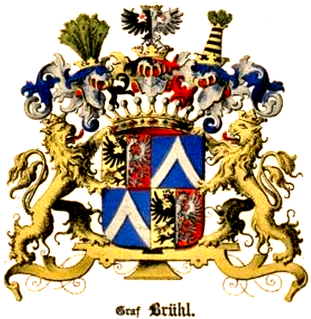
Brühl is the name of an old German noble family from Saxony-Thuringia, with their ancestral seat in Gangloffsömmern in Thuringia. Branches of the family still exist today.

Störmthal is a village, part of Großpösna in the Leipzig district in Saxony, Germany. It is known for its church in Baroque style. The organ, an early work by Zacharias Hildebrandt, was played and inaugurated by Johann Sebastian Bach and is still in mostly the condition of Bach's time.
The Oberhofgericht Leipzig was a judicial instance of the Electorate and then the Kingdom of Saxony from the fifteenth century until 1831.
Joachim Otto von Bassewitz or Bassewiß was a German statesman and politician. He was a Geheimrat of Holstein-Gottorp, president of the chamber and bailiff (amtmann) at Kiel.


